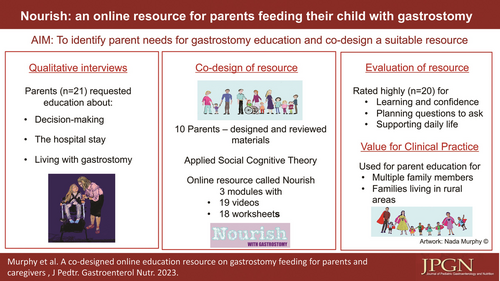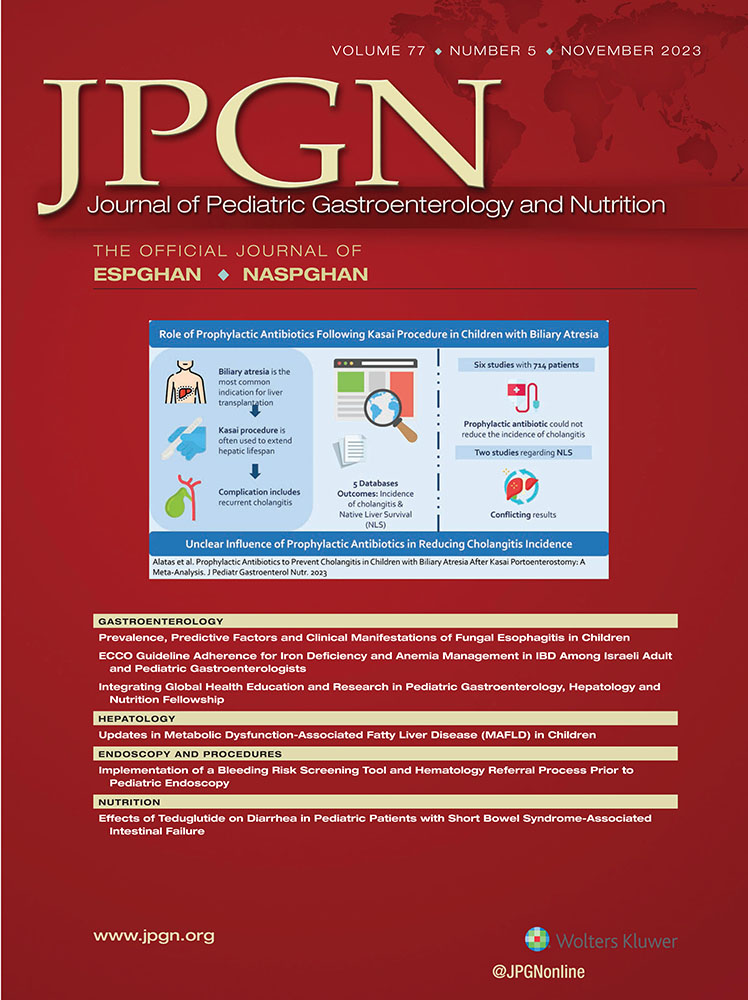A Co-Designed Online Education Resource on Gastrostomy Feeding for Parents and Caregivers to Support Clinical Care
The authors report no conflicts of interest.
This article has been developed as a Journal CME and MOC Part II Activity by NASPGHAN. Visit https://learnonline.naspghan.org/ to view instructions, documentation, and the complete necessary steps to receive CME and MOC credits for reading this article.
Supplemental digital content is available for this article. Direct URL citations appear in the printed text, and links to the digital files are provided in the HTML text of this article on the journal's Web site (www.jpgn.org).
Sources of Funding: This study was funded by an anonymous bequest administered by the Department of Communities (previously the Disability Services Commission) in Western Australia, and an Australian National Health & Medical Research Council project grant (APP1103746). Dr Downs is supported by Stan Perron Charitable Foundation Research Fellowship.
Abstract
Objective:
Children with complex needs and severe disability may undergo gastrostomy insertion to support feeding difficulties. Parent education programs are critical components of clinical care pathways but there is little information on parent-reported educational needs. This study describes the collaborative process that yielded a resource to assist parents considering gastrostomy tube placement for their children, and the evaluation of the resource.
Methods:
A qualitative descriptive study was conducted to identify parent needs for gastrostomy education. Based on these data and codesigning with parents with a child with gastrostomy tube, an online resource comprising video and written materials was developed. Twenty parents then evaluated its suitability for parent learning.
Results:
Data describing parent needs were coded into categories which represented the gastrostomy “journey”—Decision Making, Hospital Stay and Living with Gastrostomy. Called Nourish, the gastrostomy training resource comprised 19 videos and 18 accompanying worksheets. Twenty parent caregivers rated it highly for its support for learning, confidence building, and planning.
Conclusion:
The process that created Nourish generated a useful resource for parents considering or managing gastrostomy tube feedings for their child. Positive feedback suggests that this approach could be a valuable adjunct to clinical care.





